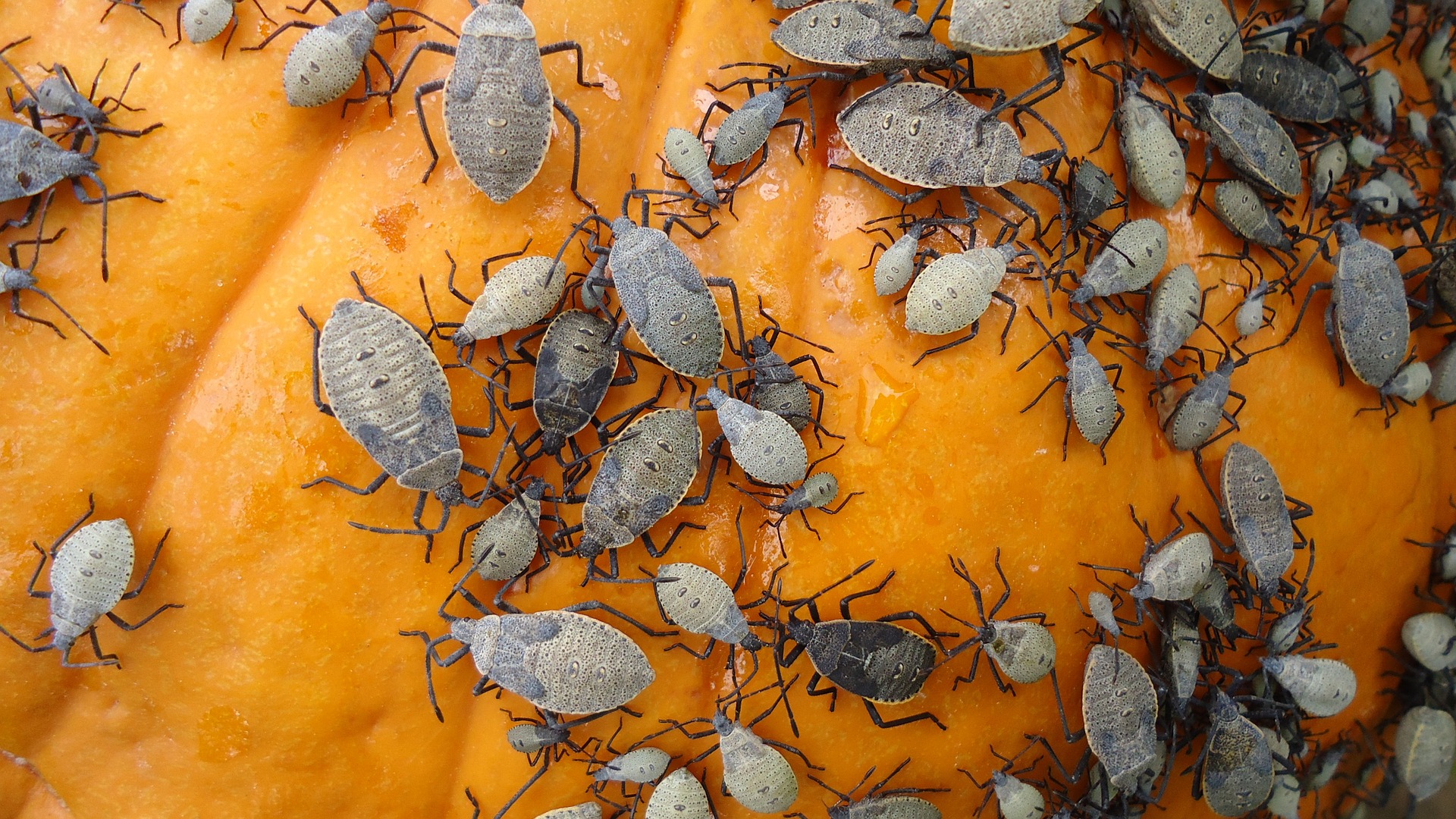There are so many things to love about fall in Northeast Pennsylvania: the colorful leaves, pumpkin spice and patches, and haunted houses. But few of us plan for pests in the fall.
While spring and summer earn the distinction of being the most prominent seasons for pests, fall actually provides a weird convergence when residual summer pests can still present a problem and a whole new crop of pests make their way to your home.
For homeowners with many trees, box elders are often a common sight during fall, but more dangerous pests, such as spiders and rodents, can easily lurk around your property.
This guide will uncover the many common fall pests in Northeast PA and provide a foolproof fall pest control prevention plan to keep them away for good.
Common Fall Pests in Northeast Pennsylvania
Early fall in Pennsylvania can still present a problem for homeowners dealing with warm weather pests like ants and mosquitoes. However, as the temperatures dip in mid-to-late October, you may start to notice a whole new crop of fall pests emerge.
- Stink Bugs: These pests invade homes in large numbers during fall, seeking warmth. While not dangerous, they emit a foul odor when disturbed or crushed. Fortunately, there are many things you can do to keep stink bugs away.
- Boxelder Bugs: Typically found on boxelder trees, these insects enter homes in droves during autumn to escape the cold.
- Ladybugs (Asian Lady Beetles): Though beneficial outdoors, they swarm into homes in the fall and can become a nuisance.
- Spiders: Several species of spider in Northeast PA, including house spiders and wolf spiders, move indoors once the temperatures change to find warmth and prey.
- Rodents (Mice & Rats): Cooler temperatures drive mice and rats indoors, where they seek shelter and food, potentially causing damage.
- Cluster Flies: These flies enter homes in groups and become dormant, hiding in attics and walls until warmer temperatures return.
- Carpenter Ants: Though active all year, they become more noticeable indoors in the fall as they look for food and nesting sites, potentially damaging wooden structures.
9 Fall Pest Control Tips for NEPA Homeowners
Fortunately, you don’t have to deal with or worry about any of the pests listed above if you follow these fall pest control recommendations.
1. Seal Cracks and Crevices
The first step to stopping pests is to prevent them from entering your home. You can do this by sealing any cracks or crevices on the outside of your house with landscaper’s caulk or expanding spray foam.
For example, stink bugs and rodents can sneak in through small openings, so inspect the siding and outer walls carefully. You can also use steel wool to block up potential openings on your home’s exterior or add protection.

- Stinkbug infestation!
2. Keep Counters Clean
Open food on the counter is like an all-you-can-eat buffet invitation to any would-be pest. The best way to prevent a pest problem is to store food in airtight containers, including your pet’s food. Avoid leaving food out for long periods and wash dishes immediately to prevent flies and other nuisance pests from invading during the cold months.
3. Seal Garbage Cans
You also want to be sure any food source outside is sealed. Open garbage can be a breeding ground for cockroaches and rodents if not properly handled. Also, it can attract bigger creatures, such as bears and raccoons, that you may not want rummaging through your trash.
4. Keep Basements, Attics, and Crawl Spaces Vented and Dry
Moisture is a major attraction for pests. While the colder months may bring drier air, it’s still essential to ensure that your home is properly ventilated if you are running a furnace. Some creatures thrive in a wet, moist environment, making basements, garages, and attics with excess moisture or standing water especially vulnerable to pests. Try installing a dehumidifier to control the amount of moisture and protect your home.
5. Screen Open Vents
While cracks and small holes in your home’s exterior can be plugged up easily, often the less obvious entryways are overlooked. Attic vents, chimneys, and pet doors can be like a welcome mat to pests. The best way to avoid any creature invasions is to put screens over any opening that cannot be sealed.
6. Inspect Incoming Packages
An easy and often forgotten way for critters to enter your humble abode is foreign objects: packages, grocery bags, outside decorations, yard equipment, and more. The last thing on our mind when bringing in the groceries is pest control. Pests can often sneak inside using any of these and more. Be careful to inspect anything you bring into your home.
7. Keep Up with Your Landscaping
Have a fire pit? Firewood is the ideal place for pests like carpenter ants and termites to nest. It’s a good idea to store any refuse, firewood, or any yard waste at least 20 feet from the house. Additionally, monitor your draining system. Pipes, open waterways, or gutters can easily bring a rodent or insect infestation. An easy way to prevent any pest problems is by keeping up with your outdoor maintenance.
8. Make Repairs
A simple way to protect your home from pests this fall is to perform yearly maintenance. Keep any cracks filled, install door sweeps, and repair damaged screens. Make sure that your windows are screened and cleaned, closing off yet another entry point. Any loose weather-stripping or mortar can provide pests access to your home. If you want to keep unwanted visitors out and keep your home warm, be sure you make the necessary repairs.
9. Watch for the Signs of Fall Pests
Regardless of how vigilant you are, everyone is human, and a pest may slip into your home. The best way to stay on top of an unwanted pest problem is to recognize the signs. Keep an eye out for droppings, signs of burrowing, or nests.
If you see one stink bug, it doesn’t mean you have an infestation. However, if you see numerous stink bugs clustering near a window, you may have a problem and need to identify the source. Educate yourself on what to look for to avoid any larger problems.
Fall is a beautiful time of year, but the cold weather shift reminds us to perform yearly maintenance to protect our homes. Be vigilant, and you can avoid any pest problems this fall. For added protection and peace of mind, contact The Pest Rangers regarding our monthly pest prevention plans.
FAQs
Why do pests invade homes in the fall?
As temperatures drop, pests seek warmth, food, and shelter. Your home provides an ideal environment for them to survive the colder months.
Can I handle fall pest control on my own, or should I hire a professional?
Minor infestations can be managed with DIY methods, such as using traps, sealing entry points, and maintaining cleanliness. However, for larger infestations or pests like rodents and carpenter ants, hiring a professional is recommended to prevent long-term damage.
When is the best time to schedule fall pest control services?
The best time to schedule pest control is early fall, before pests start seeking shelter indoors. Regular maintenance throughout the fall season will help keep your home pest-free.



























